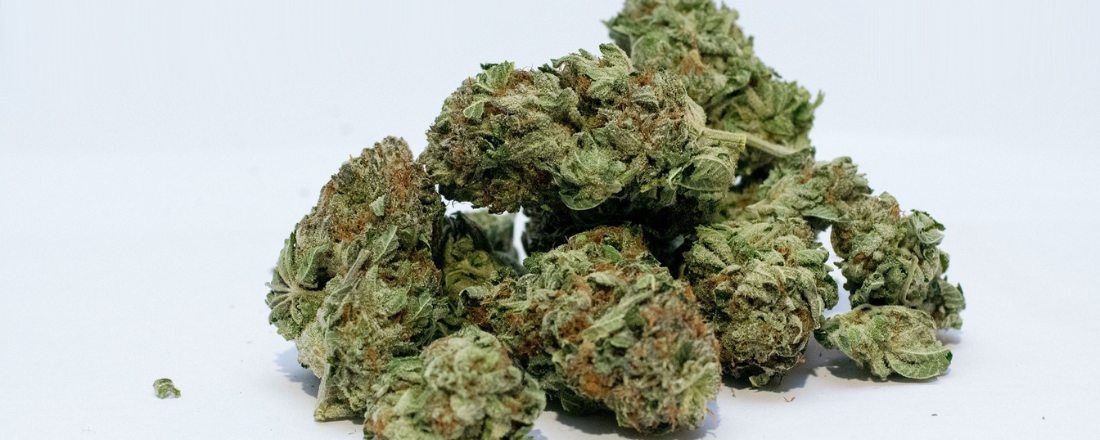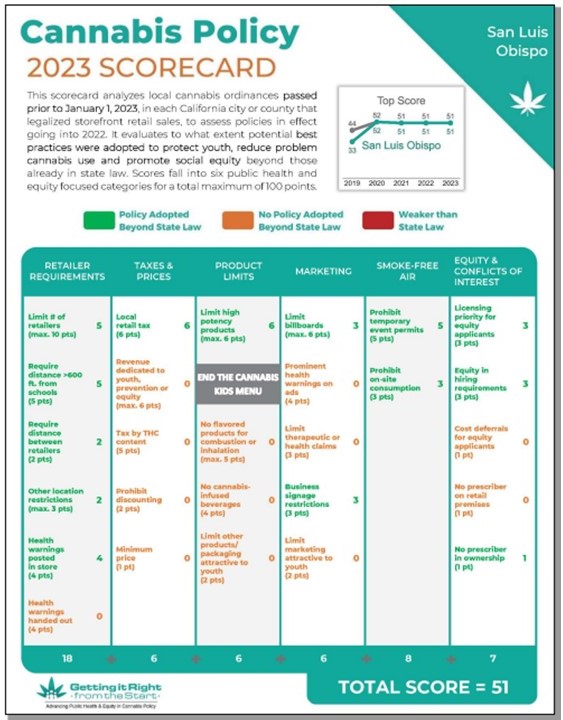
In the News
2023 Cannabis Policy Scorecards Look at Health, Safety, Equity
- California City News
-
Focus Areas
Healthy Communities -
Issues
Cannabis -
Expertise
Public Policy Advocacy, Research – Survey -
Programs
Getting it Right from the Start: Regulation of Recreational Marijuana

“The Public Health Institute (PHI) has released its fourth annual scorecards for local cannabis policies in California. These grades are based on efforts to encourage cannabis safety, including keeping cannabis out of the hands of children. High scores are correlated with restrictive environments for cannabis consumers overall.
Out of 100 points, cities and counties that allow brick-and-mortar shops scored an average of 21. The average score was just 11 among localities where only deliveries are permitted.

The legal market in California has grown enormously and is now stabilizing. Yet, the state and many local jurisdictions still failed to put in place the guardrails necessary to protect youth and public health. These scorecards provide a clear roadmap for cities and counties to meet this moment.Lynn Silver, MD, MPH, FAAP
Program Director, Getting it Right from the Start, Public Health Institute
The City of San Luis Obispo (SLO) earned the highest score (51) for jurisdictions that allow storefronts. PHI credited policies limiting the number of cannabis retailers and mandating large buffer zones around youth-servicing facilities. South Lake Tahoe saw the greatest improvement (+12 points) because of a new cannabis tax that funds youth programs.
For delivery-only jurisdictions, San Benito County ranked No. 1 (35 points). PHI cited restricted delivery locations, a local tax, and prohibitions on cannabis billboards. Among delivery-only jurisdictions, Burlingame saw the biggest increase in its score.
Biggs, Arcata, and Eureka received scores of 0.
Here are some additional findings from the report:
- 76% of jurisdictions limit the number of cannabis retailers
- 58% of jurisdictions have stronger buffer zones around youth-serving facilities than the state
- Just 22 jurisdictions have equity hiring and licensing policies
- 165 jurisdictions have enacted local cannabis taxes”
To read the full article, click on the link below.

2023 Cannabis Policy Scorecards
California cities and counties can now measure how well their cannabis ordinances are protecting youth and supporting social equity in the first five years of legalization. Scorecards summarize the evolution of cannabis policies in the 298 California cities and counties that have opted to permit retail sales, whether through storefronts and/or by delivery, of cannabis. The scorecards bring light to a patchwork of local policies that continue to mostly fall far short of what public health leaders believe is necessary.
Related Stories
Public Health Institute releases cannabis policy scorecards for cities and counties / California City News
City of SLO leads state with cannabis safety laws, new report says / KCBX Public Radio
El Monte Earns High Score on State Cannabis Report for Promoting Public Health and Protecting Youth / California City News
More Updates
Work With Us
You change the world. We do the rest. Explore fiscal sponsorship at PHI.
Support Us
Together, we can accelerate our response to public health’s most critical issues.
Find Employment
Begin your career at the Public Health Institute.



